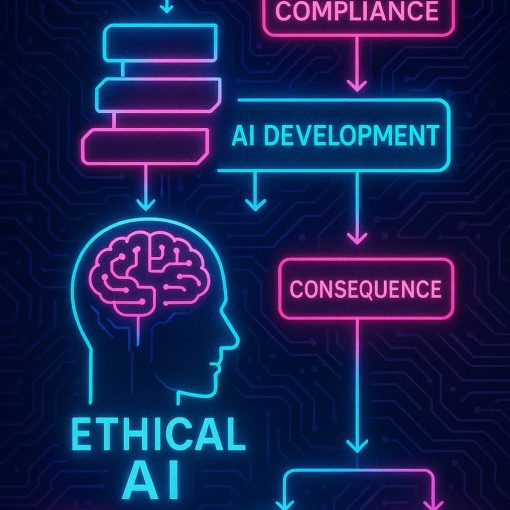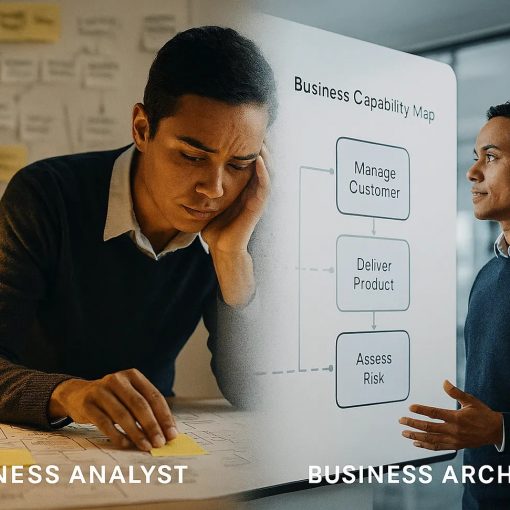Introduction: Ensuring Software Meets Business Needs
This blog post was written as a reference for Ideation: Exploring Creately for Effective Remote Team Collaboration, it is short and for a conceptual understanding related to that post.It is not comprehensive enough but is a good starter! (for more information see appendices)
Before committing to a new software solution, it’s essential to determine if the software truly aligns with your company’s requirements. This article outlines a step-by-step process for conducting a product evaluation, inspired by insights from the Reference: Functionize Blog functionize.com/blog and softwareadvice.com softwareadvice.com
Guidelines
1. Define the Purpose of the Evaluation
To embark on a successful product evaluation, it’s crucial to establish a clear understanding of the software’s intended purpose and its potential impact on the business. Consider the specific pain points the software aims to address and the benefits it promises to deliver.
2. Assemble a Dedicated Evaluation Team
Creating a PoC (Proof of Concept) team is paramount for a comprehensive evaluation. While you’ll be the point person, it’s vital to gather a well-rounded team with diverse expertise. Include representatives from various departments, such as developers, operations, release managers, enterprise architecture, networking, and security. Ensure that the team can holistically evaluate the software and its integration with existing systems.
3. Enlist Vendor Support and Preparation
Collaboration with the software vendor is crucial for a successful PoC. Designate a single point of contact to work closely with the vendor, minimizing miscommunication and streamlining the technical aspects of the evaluation process. Coordinate with the vendor to set up dedicated working sessions for configuration and execution of the PoC scope and scenarios.
4. Establish Clear Objectives and Metrics
Define the scope of the evaluation and establish concrete success criteria. Document the current pain points and how they impact the business. Align these with the desired product features and functionalities. Create metrics that can measure the software’s impact, performance, and alignment with business goals. This step ensures a focused evaluation process and facilitates objective decision-making.
5. Set a Realistic Testing Period
Determine the appropriate timeframe for the PoC. Ensure that the evaluation is comprehensive but not excessively prolonged. Set deadlines and prioritize the evaluation, considering the availability of resources and the software’s relevance to ongoing projects. Test the software under various business cycles to assess its performance under different scenarios.
6. Evaluate for Holistic Fit
During the PoC, assess the software’s alignment with your organization’s unique environment and processes. Test both typical and edge-case scenarios to understand the software’s capabilities thoroughly. Consider factors like scalability, resilience, availability, and ease of integration. Identify any potential vendor lock-in and evaluate the software’s compatibility with your existing ecosystem.
7. Involve End-Users and Collect Feedback
Gather feedback from end-users and stakeholders throughout the evaluation process. Understand how the software impacts daily workflows and whether it aligns with the organization’s culture and values. Prioritize feedback from those who will use the software extensively. Engage in open communication with users to address concerns and gauge overall satisfaction.
8. Financial Assessment and Vendor Comparison
Assess the total cost of ownership (TCO) for the shortlisted software options. Consider factors such as acquisition costs, implementation, ongoing maintenance, support, and potential integration expenses. Create a financial comparison that includes licensing costs and a cost-benefit analysis. Evaluate vendor offers in terms of customer support, training, and overall partnership quality.
9. Present Conclusions and Recommendations
Compile the results of the PoC into a comprehensive report that outlines the software’s performance, alignment with objectives, and financial implications. Include a score or qualification based on the evaluation’s findings. Discuss the user feedback, the software’s impact on the organization’s culture, and its fit with the team’s goals. Provide a recommendation based on the evaluation’s outcomes.
By following these guidelines its worth notingthat this guideline is not exhaustive, so tailor to your needs, your company can make informed decisions when evaluating enterprise software, ensuring that the selected software solution meets both technical and business requirements
Appendices
The Institute For Enterprise Architecture Developments(institute-for-enterprise-architecture-developments/) has an Enterprise Architecture Tool Selection Guide (I have a copy but could not find it on their site)
Alternative guidelines 2
Technical Evaluation Criteria for Software Selection: build vs buy
Some considerations:
- Consideration vendor or developer capability and experience
- Review case studies \reference sites
- Software demo and technical appraisal of software
- Create assessment criteria from details below.
- Choose agile methodology based on scale
- Determine type: is this a business transformation, change programme, software development project : upgrade replacement or introduction of software and process change etc.
Table of Contents:
- Introduction
- Objectives and Scope
- System Requirements
- Functional Requirements
- Technical Architecture
- Integration Capabilities
- Performance and Scalability
- Security
- Data Management and Privacy
- User Interface and Experience
- Support and Maintenance
- Deployment and Implementation
- Cost and Licensing
- Vendor Evaluation
- Conclusion
1. Introduction
- Overview of the evaluation process and purpose
- Background information on the software selection initiative
- Key stakeholders and decision-makers involved in the evaluation
2. Objectives and Scope
- Clearly define the goals and objectives of the software acquisition
- Define the scope of the evaluation, including the targeted software functionalities and intended use cases
3. System Requirements
- Identify the hardware and software infrastructure required for the software
- Assess compatibility with existing systems, databases, and operating systems
- Consider system dependencies and prerequisites
- Evaluate by comparing the software’s requirements with the organization’s existing infrastructure.
4. Functional Requirements
- List the desired features and functions of the software
- Prioritize requirements based on their importance and criticality to the organization
- Evaluate how well the software meets the functional requirements
- Involve key stakeholders and end-users in the evaluation process
5. Technical Architecture
- Assess the software’s underlying technology stack and architecture
- Consider factors such as scalability, modularity, flexibility, and extensibility
- Evaluate the software’s compliance with industry standards and best practices
- Evaluate through code reviews, architecture documentation, and discussions with software architects.
6. Integration Capabilities
- Evaluate the software’s ability to integrate with other systems and tools
- Assess the availability of APIs, data connectors, and integration frameworks
- Consider the ease of data exchange and interoperability with existing infrastructure
- Review integration documentation, perform proof-of-concept integrations, and consult with IT experts.
7. Performance and Scalability
- Define performance benchmarks and metrics for evaluating the software’s speed, responsiveness, and throughput
- Assess the software’s ability to handle increasing workloads and scale with organizational growth
- Consider Conduct performance testing, analyze benchmarks, and consult with performance engineers.
- factors such as latency, response times, and resource utilization
8. Security
- Evaluate the software’s security measures and protocols
- Assess authentication and access control mechanisms
- Consider data encryption, vulnerability management, and compliance with relevant security standards
- Review security documentation, perform security assessments, and consult with cybersecurity experts.
9. Data Management and Privacy
- Assess the software’s data management capabilities, including data storage, retrieval, and backup
- Evaluate data governance features and privacy controls
- Consider compliance with data protection regulations and privacy laws
- Review data management documentation, assess data security practices, and consult with legal and compliance teams.
10. User Interface and Experience
- Evaluate the software’s user interface design and usability
- Consider the intuitiveness, accessibility, and customization options of the user interface
- Assess the software’s support for multiple devices and screen sizes
- Conduct user testing, gather feedback from end-users, and consider conducting usability studies.
11. Support and Maintenance
- Evaluate the vendor’s support services, including response times, availability, and escalation procedures
- Assess the software’s maintenance requirements and frequency of updates
- Consider the vendor’s track record and customer satisfaction with support and maintenance
- Review vendor’s support documentation, seek customer references, and evaluate service level agreements.
12. Deployment and Implementation
- Evaluate the ease of deploying and implementing the software within the organization
- Consider factors such as installation requirements, configuration complexity, and deployment timeframes
- Assess the availability of implementation resources, documentation, and training materials
- Conduct implementation assessments, review implementation guides, and consult with implementation experts.
13. Cost and Licensing
- Assess the total cost of ownership, including upfront costs, licensing fees, and ongoing expenses
- Evaluate the software’s licensing model and potential limitations or restrictions
- Consider factors such as subscription options, pricing models, and negotiation possibilities
- Perform a cost analysis, engage in licensing discussions, and consult with procurement experts.
14. Vendor Evaluation
- Evaluate the vendor’s reputation, experience, and financial stability.
- Consider customer reviews, case studies, and references.
- Assess the vendor’s product roadmap and commitment to innovation.
- Conduct vendor evaluations, attend vendor presentations, and seek customer feedback.
Conclusion
Remember to tailor the evaluation criteria and process to your organization’s specific needs and priorities. Engage relevant stakeholders throughout the evaluation process and document your findings and decision-making rationale for future reference.
Table: Criteria, Measurement, Acceptance, Comparison





One thought on “How to Conduct a Product Evaluation for Software”